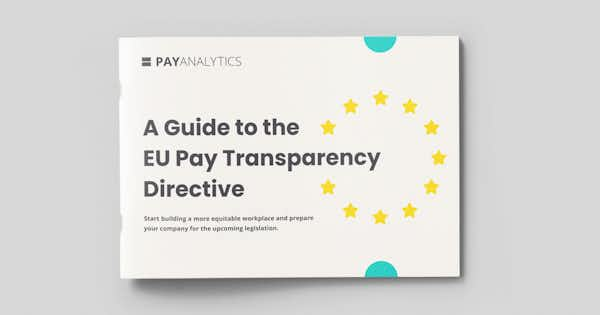Förberedelser inför EU:s direktiv om lönetransparens | Ladda ner vår e-bok gratis

Washington Pay Transparency Law Requires Employers to Post Pay Ranges in Job Listings
In 2023, Washington State expanded its pay transparency requirements by creating the Equal Pay and Opportunities Act (EPOA). Rather than disclosing a job’s minimum pay when making an applicant a job offer, the EPOA requires employers to disclose pay ranges in the job posting. In 2025, an amendment was passed to give employers a short window to correct noncompliant postings, to reduce statutory damages for noncompliance, and to clarify the wage information required in postings.
Laws in Washington State aim to increase pay transparency
Washington State began making steps towards pay transparency in 2019, when it started requiring many employers to be prepared to disclose a job’s minimum pay when they offer an applicant a job. Since January 1, 2023, the EPOA has required employers to state pay ranges in the posting for every open job. In 2025, an amendment to the EPOA clarified that if a job pays a fixed rate rather than a range, the fixed rate is also acceptable in the posting.
Washington’s EPOA is not unlike pay transparency legislation that has been passed in other locations, such as New York City. However, the EPOA differs from the NYC law in that it requires employers to name the benefits that go along with each position. These include healthcare and retirement benefits, time off, stock options, bonuses, relocation assistance, and profit sharing.
The EPOA applies to companies with at least 15 employees, including out-of-state employers with one or more Washington-based employees. It also covers companies posting remote jobs and internal job transfers.
As of July 27, 2025, an amendment to the EPOA gives employers five days to correct any job listings that do not include the required information. This includes reaching out to any third-party job posting sites. This provision of the amendment will be effective through July 27, 2027.
The amendment also reduces statutory damages for noncompliance, previously set at $5,000 per violation, making them discretionary at a range from $100 to $5,000.
As with pay transparency legislation in other states, the best way for companies to become compliant with Washington’s EPOA is to clarify their pay scales internally. This means making sure they are consistent and driven by objective criteria. In addition, employers may want to ask themselves some questions about their benefits packages. For instance, are benefits distributed equitably within the organization? How does the company conceptualize benefits as part of its pay structure?
This kind of clarification is often tough work, but it will put the company in a position where it can give the required information to new job applicants. It will also help them have conversations with current employees who may have questions about their pay.
Next steps for employers with 15 or more employees
Employers should make sure the required information appears in all job postings, including those published through third-party outlets.
Job postings should include:
Wage scale, salary range, or fixed pay rate for the position.
General description of all benefits.
General description of other compensation.
The requirement applies to:
Washington based employees and applicants.
Employers engaging in business in Washington.
Employees who have been offered an internal transfer or promotion.
For examples and further information on the job posting requirement, here is a link to a job posting requirements factsheet to a job posting requirements factsheet from the Washington State Department of Labor & Industries.
Discover how PayAnalytics can help you to comply with local pay transparency laws in Washington State—and beyond. Book 30 minutes with a specialist to get started.
The information on this page is not intended to serve and does not serve as legal advice. All of the content, information, and material in this article are only for general informational use. Readers are advised that this information, legal or otherwise, may not be up-to-date.





